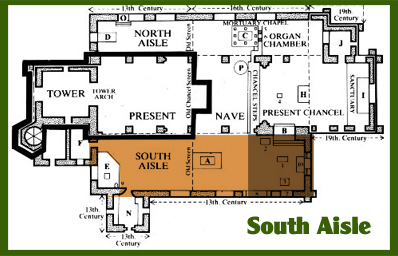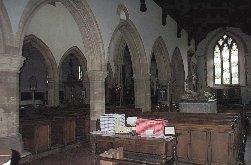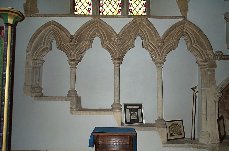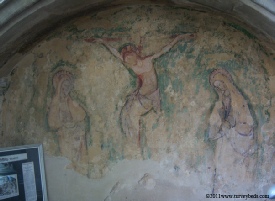


©2015 Deborah Richardson





Privacy Policy
Copyright





The South Aisle & Lady Chapel
Turvey Church Tour - Part 2


The South Aisle
This picture shows the view down the South aisle, taken from just inside the main doorway.
The great arches of the nave are clear, as is the window of the Lady Chapel in the South aisle. Above the central arch you can just see the remains of one of the original Saxon windows (dating from around 980 CE).
To the middle of the right of the picture you can also see the tomb of Sir John Mordaunt and Lady Edith Mordaunt. (Marked A on the map).
There is a whole page dedicated to the wonderful tombs of the Mordaunt family.
The Fresco
On the right hand (South) wall, together with many memorials to Turvey families are two of Turvey Church's greatest treasures.
The fresco show on the right is from the 13th Century and shows the crucified Christ, together with his mother, Mary and Saint John. (Click the picture for a larger view)
Saint John is unusual in that he does not have a beard (causing him to be mistaken for a woman for a while).
This remarkable piece of art was hidden beneath plaster for centuries until discovered during the major church renovations on the 19th century. The Times newspaper said of the discovery that this fresco is 'the finest painting of its subject and time in the country'.
A fresco is painted into the wall's plaster before it dries. It is difficult and skilled work.
The Sedilla
To the left of the fresco, beneath the south-
The Lady Chapel
This section of the church is known as The Lady Chapel (marked in dark brown on the map). It houses three well preserved floor brasses and of course an altar. There is also another Mordaunt tomb between the Lady Chapel and the choir stalls.This one is for Sir John Mordaunt and his wife and dates from 1562.
 Continue the tour ...
Continue the tour ...





